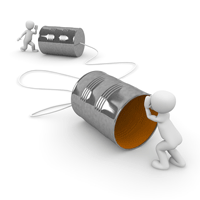3 Ways to Kick-Start Conversions

Conversions are one of the top priorities of companies engaging in online business. Without a strong rate of conversions, companies are simply sinking money into a profitless division. With the right strategy, however, a company's online presence can trigger substantial growth.
Mobile optimization is the key to getting conversions in 2013. Everywhere you look, someone is checking their smartphone for recommendations about which product to buy or which restaurant to try. Developing a strategy that targets mobile consumers allows your company to draw in a whole new demographic. Mobile-first businesses generally place an emphasis on acquiring new customers, a focus that many mainstream organizations lack, according to David Needle.
If you are unsure of how to improve your online marketing tactics, try integrating at least one of the following three strategies. In 2013, optimizing your mobile landing pages, updating your email marketing, and mastering the balance between short- and long-form content are three of the surest ways to gain conversions.
Creating an Optimized Landing Page
A landing page is the online form of a first impression. Your landing page needs to give viewers an immediate idea of what to expect from your products or services. Furthermore, an optimized landing page will engage consumers in a way that encourages conversions. Without careful optimization, your landing page may drive consumers away, especially in regard to mobile.
The top priority of a landing page optimized for mobile is accessibility. Every aspect of the landing page must be easily navigable by fingers on a touch screen, or the visitor will quickly return to the search engine to choose a different result. Avoid the use of elements that include flash or plug-ins, since they slow down mobile users.
Mastering the art of engaging headlines is a persuasive way to interest consumers and bring in conversions. Strong, informative headlines decrease the need for wordy descriptions underneath, which is beneficial for the necessity of speed. Mobile users want to visit pages that load immediately and present brief, to-the-point information.
In order to increase conversions, more and more businesses are utilizing variable sites that can rearrange themselves to target the viewer's needs. Based on the visitor's search criteria, your optimized landing page should present relevant information that makes it easy for the consumer to convert.
Innovative Email Marketing
Although many marketers seems to believe that email marketing has run its course and lost its relevance in the age of mobile, there is a strong contingency of experts that still encourage the use of email marketing. In fact, email marketing can be improved for mobile by incorporating many of the same strategies that apply to landing pages.
Mobile users usually check their email even more frequently than those using a computer, so be sure to send out emails that are optimized for mobile views. Like mobile landing pages, email marketing should be simple, accessible, and relevant. Remove graphics and images so that the text is prominent. Pare the content down to the most important information and include formatting techniques like bullet points and bolding to make your message easy to scan.
When developing the content for your email marketing, drop the sales pitch. We've all seen an endless stream of sales pitch emails piled into our inboxes. If consumers feel like you have nothing to offer besides a sales pitch, they will take their business to a more engaged company. Instead of a sales pitch, use your email to offer valuable content that sparks interest and encourages interaction. One way to optimize your content is to make use of targeted marketing.
In order to turn your emails into conversions, don't forget to include plenty of clear links. Once you have claimed the reader's attention, show them a way to respond through visiting your website or social media profile. Since you are avoiding an obvious sales pitch in your email, you have to find a creative way to build conversions. Giving the reader incentive to follow a link is the most dependable way to get him or her to a page that will present a sales pitch.
The Strengths of Short- and Long-Form Content
The most obvious reason for the popularity of short-form content is the growth of Twitter. As modern individuals try to condense every thought into 140 characters, long-form content has declined. Even blog posts have generally become shorter and more succinct to accommodate the desire for quick sources of information.
Long-form content hasn't become irrelevant, however. Experts like Ev Williams are predicting a return to long-form content as we react to the overdose of short-form content. Long-form content provides a space for more meaningful and insightful commentary that develops and share ideas in a way that can't be achieved in short-form content.
So how should your company use short- and long-form content to get conversions in 2013? The most effective strategy is to use both forms to complement each other. Use short-form content to create initial contact with consumers, whether through tweets, blogs, or Facebook posts. Once that contact is established, present long-form content that deepens the connection between your company and the consumer by instigating conversation that will generate conversions. A combination of short- and long-form content strategies will produce a more comprehensive marketing campaign that permeates your customers' online lives.
About the Author
Amie Marse, is the founder and managing partner of Content Equals Money, a content writing service for agencies and Web-based clients.

Subscribe to Our Newsletter!
Latest in Mobile Marketing










